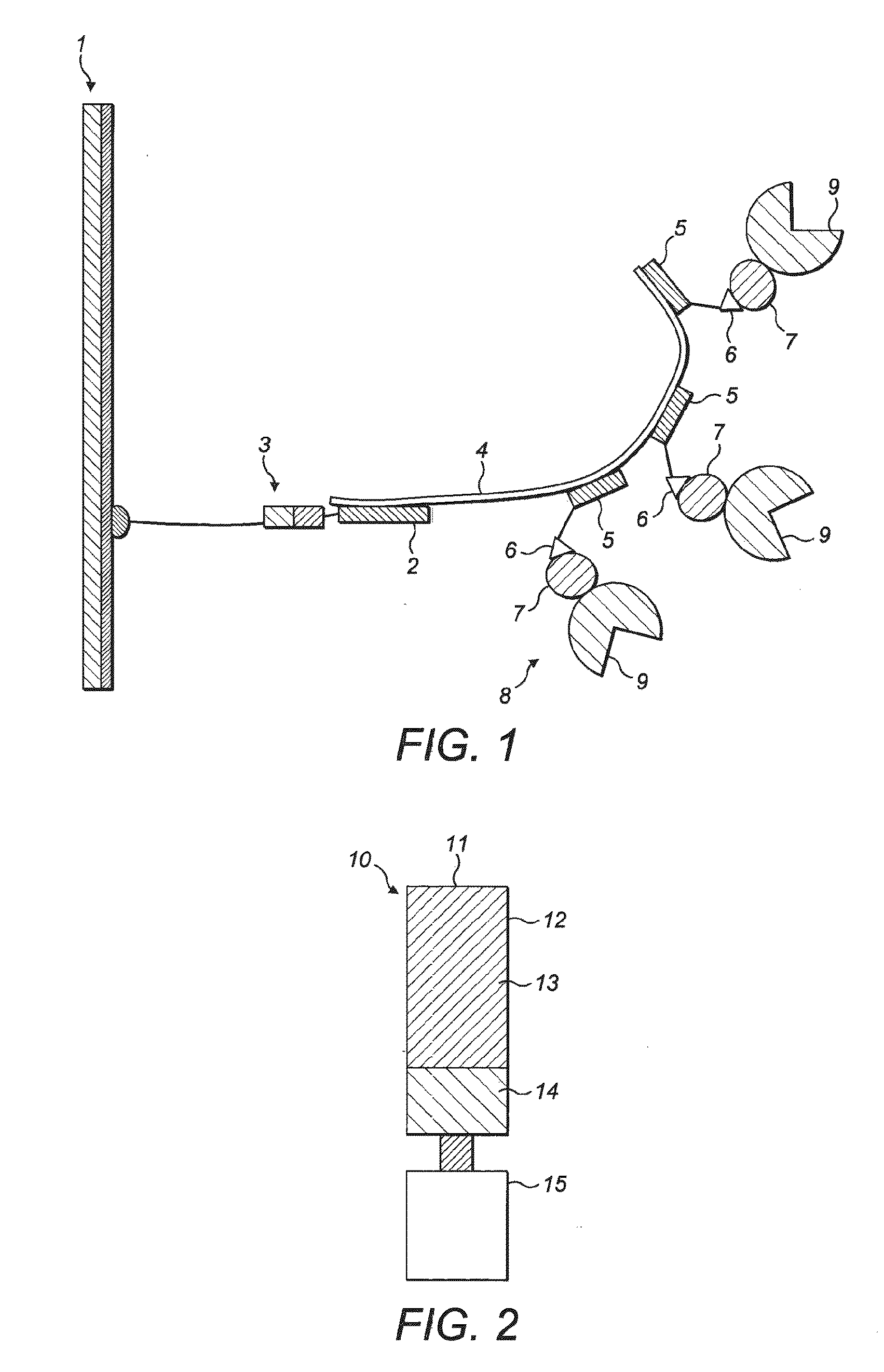Assay for detecting a nucleic acid analyte in a biological sample
a nucleic acid analyte and biological sample technology, applied in the field of biological sample analyte detection assay, can solve the problems of epidemics at borders, potential differences between working electrodes, clean, reference electrodes, etc., and achieve the effect of rapid identification
- Summary
- Abstract
- Description
- Claims
- Application Information
AI Technical Summary
Benefits of technology
Problems solved by technology
Method used
Image
Examples
examples
[0158]A luminol-based assay was performed, using HRP as the catalyst instead of catalase and detecting the assay stack using light HRP will only be present when the correct genomic DNA is present that allows the HRP to be bound to the surface of the electrode. By exposing the electrodes to a luminol solution and placing them in an imager we can detect the HRP on the surface of the electrode.
[0159]Two electrodes had MRSA specific surface probes covalently attached to their surfaces. Electrode 1 was exposed to a hybridization solution containing E. Coli genomic DNA and electrode 2 to MRSA DNA.
[0160]MRSA specific signal probes were also present in both hybridization solutions. In this case the signal and surface probes are separated by a distance of around 100 kb. These were heated to 95 for 30 seconds then hybridized to the probe for 3 min at 45 C.
[0161]The electrodes were then exposed to streptavidin-HRP before being imaged in the presence of luminol solution.
[0162]FIG. 3 shows that ...
PUM
| Property | Measurement | Unit |
|---|---|---|
| Temperature | aaaaa | aaaaa |
| Acidity | aaaaa | aaaaa |
| Digital information | aaaaa | aaaaa |
Abstract
Description
Claims
Application Information
 Login to View More
Login to View More - R&D
- Intellectual Property
- Life Sciences
- Materials
- Tech Scout
- Unparalleled Data Quality
- Higher Quality Content
- 60% Fewer Hallucinations
Browse by: Latest US Patents, China's latest patents, Technical Efficacy Thesaurus, Application Domain, Technology Topic, Popular Technical Reports.
© 2025 PatSnap. All rights reserved.Legal|Privacy policy|Modern Slavery Act Transparency Statement|Sitemap|About US| Contact US: help@patsnap.com



